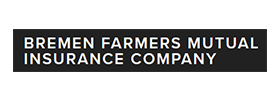If you didn’t already know, Kansas is one of 48 states that requires auto insurance by law. Driving without auto insurance–even home from the dealership after first buying a car–is illegal.
If you’re tempted to drive without car insurance to skip out on the premiums and save yourself a little cash, or simply for the added convenience, think twice. Here are the penalties in Kansas if you get caught driving without auto insurance.
What auto insurance is required in Kansas?
When you purchase car insurance in Kansas, you’re actually buying six individual coverages. These are each designed to protect you against a different kind of loss.
Here are the six different types:
Bodily Injury Liability
This coverage helps pay for medical bills incurred by someone who you injured in an automobile accident. It includes rehabilitation, funeral costs, and other expenses. It also includes settlements of lawsuits/your legal expenses.
Property Damage Liability
This coverage helps pay for repair costs done to property you damaged in an automobile accident. It also includes settlements of lawsuits/your legal expenses.
Personal Injury Protection (PIP)
Also called no-fault, PIP pays for any rehabilitation, medical expenses, funeral expenses, lost wages, or in-home assistance that is needed for you or any passengers of yours who were injured or killed in a car accident. This applies regardless of fault, and passengers who own their own car may need to go through their insurance first before another person’s policy.
Uninsured/Underinsured Motorist Protection
This coverage helps pay for you or your passengers’ medical, rehab, or funeral bills in the event of an accident involving an underinsured or uninsured driver. It also covers hit-and-runs and can cover you and your family if you’re hit while walking or riding a bike.
Collision Coverage
Optional collision insurance covers your vehicle for collision-related damages, including collisions with stationary objects, like curbs and street posts.
Comprehensive Coverage
Optional comprehensive insurance covers your vehicle against non-collision damages, so fire, theft, vandalism, and similar may all be covered under your policy.
What are the penalties for driving without car insurance in Kansas?
If you are caught driving without the minimum level of coverage–(so the above coverages minus collision and comprehensive)–you could be fined. In fact, driving without car insurance in Kansas may constitute as a misdemeanor. You could have your license and registration suspended, or you could even face imprisonment. Here are the penalties you could face for driving without car insurance in Kansas:
- For a first offense, you could see a fine of $300-$1,000. You may face imprisonment of no more than six months, or a combination of a fine and imprisonment. Your license and registration will also be suspended until proof of insurance has been filed and you’ve paid the $100 fee to reinstate your documents.
- For a second offense, you could see a fine of $800-$2,500. You may face imprisonment of 90 days mandatory. Your license and registration will also be suspended until proof of insurance has been filed and you’ve paid the $100 fee to reinstate your documents.
- For a third offense or habitual violation, you could see a fine of $1,500-$2,500. You may face imprisonment of 90 days mandatory. Your license and registration will also be suspended for three years, and you’ll have to pay a $100 fee or $300 fee if your violation to reinstate your documents if your violation is within a year of the previous one.
What if I have insurance but don’t have it on me?
If you are caught unable to produce your proof of insurance, usually a physical document/i.e., pink slip, you may be considered guilty of an “administrative violation.” This is similar to a seat-belt ticket. You could have this citation dismissed if you can prove to a court of law within ten days that you have proof of valid insurance.
Driving without car insurance (not being insured at all) and being caught not having valid proof of insurance on your person when being pulled over are two different crimes. Just make sure you’re able to show proof of your insurance later on if you’re stuck in a sticky situation at first–otherwise you may be faced with similar consequences as you would if you were caught uninsured.
How does a lapse in insurance impact my future rates?
A lapse in insurance or “car insurance lapse” is any amount of time when your policy becomes inactive. A condition such as this can result in higher premiums and of course, fines if your policy is inactive during a period where you are still driving.
A lapse can also signal to a future insurer (or current insurer if you go back with who you were insured with previously) that you are a high-risk driver who is likelier to get into an accident than someone who remains consistently insured. Auto insurance companies will generally readjust your rates to reflect this higher-risk, meaning you could end up paying two or three times as much. Longer lapses may mean higher insurance rates.
And if you get into an accident during a lapse? You’ll be solely responsible for any of the damages, to yourself, your vehicle, and possibly even for the other driver/their injuries if you were at-fault. This can be massively expensive, with a price tag of tens of thousands of dollars. You’re probably better off paying your premiums, which overall would be much less than the larger cost of a loss. Plus, paying your premiums consistently won’t saddle you with a high-risk label for the next 3-6 years.
Need auto insurance, fast? Give us a call at AHI Group. We’d be happy to help you out and get you what you need, when you need it.




























